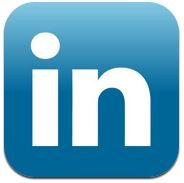"Pick me, let me promote your organization,
it's definitely a whole lot cheaper than the current advertising
company burning a hole in your pocket!"
it's definitely a whole lot cheaper than the current advertising
company burning a hole in your pocket!"
Although any of these platforms may be challenging for first time user, the benefits are astounding. One health organization has the ability to connect with their market through one-on-one conversation without leaving the office. The advancement of technology allows for easier communication with any two (or more) people; whether one of them are from an organization or not. Social media enhances the ability for these separate parties to communicate with one another by giving many different ways to do so. This may be through a picture, a video, a live chat, a post, a comment, an open blog, a forum, and so much more. What health organization does not want to communicate to its donors, survivors, patients, fans, and so forth?
Promoting a cause through social media is an easy, yet not so easy, way to increase metrics an organization may currently have. This includes increasing awareness, increasing donation dollars coming in, increasing research abilities, increasing fans, and ultimately popularity of an organization. The question still remains for many health organizations of how to do so. This is where the not so easy part comes in.
Many health organization still have trouble meeting their specific metrics through social media. They are not sure where to begin or how to go about it. What should they be posting? Which platforms are going to be most useful for them? How will this effect their organization? Will a platform support their cause or mission statement specifically?
Many of these questions and more can easily be answered quickly with a search online, through sites such as Mashable and other blogs. Many of my personal questions about social media platforms were answered through articles we were provided for class. Further research for a health organization using social media can be found on the actual platform site. For example, on Facebook and Google+, you can find informational material on how an organization can use them while signing up.
Finally, I have come up with three golden rules for social media and health promotion through my own experiences this semester. These Golden Rules are easily interchangeable with close to any platform. Although more rules made be helpful, utilizing these rules will likely set the stage for a current organization using social media or those who are making the decision to do so now. These Golden Rules are created to help meet metrics an organization may have.
ONE: Create a Great Team
Create a team that is interested in social media, or greatly interested in exploring it. A health organization's team may only consist of one person, but there still is no 'I' in team. This person should be interacting with others throughout the organization. Doing so will help create awareness of what is going on internally. All of which expands the social media team and social media material. Current events, current research findings, and so forth may be incorporated into the social media material. The article How to Build an All-Star Social Media Team puts into great detail how an organization can build such a team. Although all of these positions may not be filled in a smaller non-profit organization, they may still take parts from it.
TWO: Know When to Respond to NegativityA negative comment or response of some kind from viewers is going to happen somewhere along the way. At one point or time these will appear on an organization's chosen platform(s). Lets face it, this world is full of negativity and it doesn't stop at social media. The health organization's social media team should be given strict guidelines on times and ways to respond. A comment on Facebook from an individual saying they are disappointed in the customer service line is not something to ignore. The guides for the team should address which negative communication to respond to, which to ignore, which to delete, and which to report. An ASPCA article, Top 10 Tips for Responding to Negative Comments, provides just that. Although this may not be a social media expert blog. The information is great!
THREE: Remain Consistent
A health organization should not let their viewers down, or they will go elsewhere! This pertains to amount of posts, material, and interactions with the viewer. If an organization is posting on a regular basis (3-5 times a week) and suddenly does not post for 5 days in a row the viewers are going to leave. If the material in posts begin to repeat themselves or lack interest, intellectually or visually, viewers are going to stop coming back. If an organization intereacts on a daily basis with their viewers and suddenly stop, the viewers are not going to return. This is exactly what an organization does not want! They want to increase viewers instead of decrease them.
Times may come up where social media is put to the side for a few days, especially in a small nonprofit organization where the "Great Team" is only one person. In these instances the viewers should be told ahead of time. A post on Facebook should be found stating social media for 'ABC organization' will be taking a short break until Monday, Nov. 4th. In the post also should be stated the site is not shutting down and the viewers are not going to be ignored. If the viewer is informed from the organization directly they will believe it.







